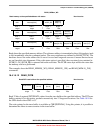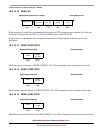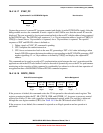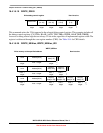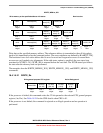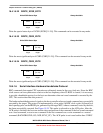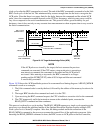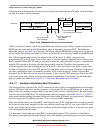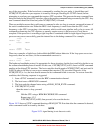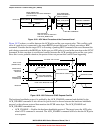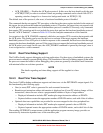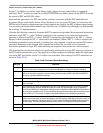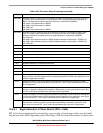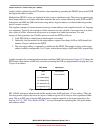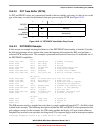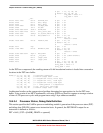
Chapter 18 Version 1 ColdFire Debug (CF1_DEBUG)
MCF51QE128 MCU Series Reference Manual, Rev. 3
Freescale Semiconductor 407
Get the latest version from freescale.com
any of the stop modes. If the host aborts a command by sending the sync pulse, it should then read
XCSR[CSTAT] after the sync response is issued by the target, checking for CSTAT cleared, before
attempting to send any new command that requires CPU execution. This prevents the new command from
being discarded at the debug/CPU interface, due to the pending command being executed by the CPU. Any
new command should be issued only after XCSR[CSTAT] is cleared.
There are multiple reasons that could cause a command to take too long to execute, measured in terms of
the serial communication rate. Either the BDC clock frequency is much faster than the CPU clock
frequency, or the CPU is accessing a slow memory, which would cause pipeline stall cycles to occur. All
commands referencing the CPU registers or memory require access to the processor’s local bus to
complete. If the processor is executing a tight loop that is contained within a single aligned longword, the
processor may never successfully grant the internal bus to the debug command. For example:
align 4
label1: nop
bra.b label1
or
align 4
label2: bra.w label2
These two examples of tight loops both exhibit the BDM lockout behavior. If the loop spans across two
longwords, there are no issues, so the recommended construct is:
align 4
label3: bra.l label3
The hardware handshake protocol is appropriate for these situations, but the host could also decide to use
the software handshake protocol instead. In this case, if XCSR[CSTAT] is 001, there is a BDC command
pending at the debug/CPU interface. The host controller should monitor XCSR[CSTAT] and wait until it
is 000 in order to be able to issue a new command that requires CPU execution. However, if the
XCSR[CSTAT] is 1xx, the host should assume the last command failed to execute. To recover from this
condition, the following sequence is suggested:
1. Issue a SYNC command to reset the BDC communication channel.
2. The host issues a BDM NOP command.
3. The host reads the channel status using a READ_XCSR_BYTE command.
4. If XCSR[CSTAT] is 000
then the status is okay; proceed
else
Halt the CPU using a BDM BACKGROUND command
Repeat steps 1,2,3
If XCSR[CSTAT] is 000, then proceed, else reset the device
Figure 18-21 shows a SYNC command aborting a READ_BYTE. Note that after the command is aborted,
a new command could be issued by the host.
NOTE
Figure 18-21 signal timing is not drawn to scale.



